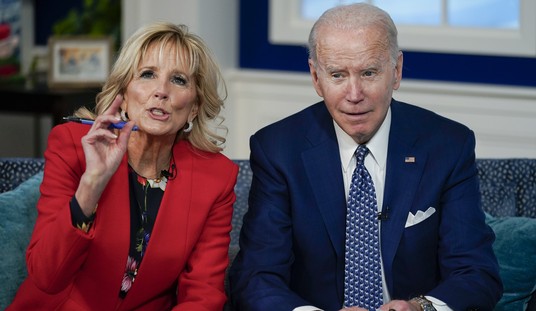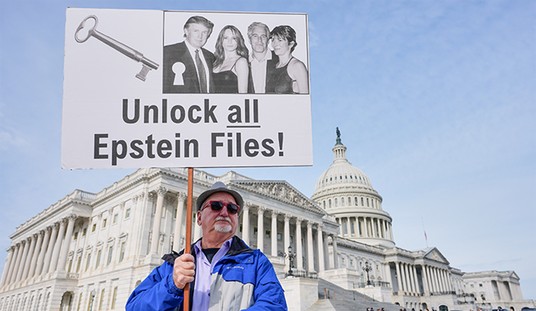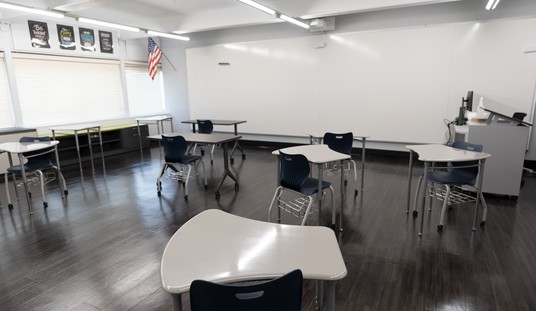In fiscal 2024, when President Joe Biden was still in office and the federal government was running a $1.8 trillion deficit, the Department of Education spent three times as much as the Department of Homeland Security and six times as much as the Department of Justice.
The Department of Homeland Security, according to the Treasury Department, spent $89.290 billion. The Department of Justice spent $43.995 billion; and the Department of Education spent $268.353 billion.
President Donald Trump issued an executive order in March directing his administration to prepare for the closure of the Department of Education.
This is the right move.
Both the Justice Department and the Department of Homeland Security exist to carry out fundamental -- and constitutional -- functions of the federal government. The primary job of Homeland Security is to secure this nation's borders and protect its interior from people who are illegally present here, including terrorists. The primary job of the Justice Department is to enforce federal laws and prosecute violators.
In 1978, Democratic President Jimmy Carter sent a message to a Democrat-controlled Congress explaining why he wanted it to create a federal Department of Education.
"We must do a better job of teaching the basic skills of reading, writing and mathematics," Carter said. "We must remain committed to full and equal educational opportunity for all children. We must help students achieve educational excellence."
"A separate Cabinet-level department will enable the Federal government to be a true partner with State, local and private education institutions in sustaining and improving the quality of our education system," Carter claimed.
Recommended
The text of the bill that was proposed to create this new federal department stated that one of its purposes was "to supplement and complement the efforts of States, the local school systems and other instrumentalities of the States ... to improve the quality of education."
Tellingly, a former teacher became one of its leading opponents in the Senate.
Republican Sen. Sam Hayakawa of California, who had served as an English professor and then as the president of San Francisco State College, explained his opposition to creating a federal Department of Education in a speech delivered on the Senate floor on Sept. 24, 1979.
"Having this new department is rather like grasping at straws," said Hayakawa. "We see there is a problem and attempt to solve it by creating a new department. I wish someone would tell me how this new department is going to make our children literate? Or how it will erase the violence that has erupted in our schools? Or how it will ensure that we get what we pay for with our tax dollars?"
"The growing belief that we should look to the Federal Government to solve the problems of our schools is, I think, a major mistake," said Hayakawa. "Our schools should be a primary responsibility of our parents, students, and the State and local officials."
"Our problems will not, cannot, be solved here in Washington," he said. "Ours are problems of the classroom -- the students, the teachers, the curriculum. These cannot be corrected by way of Washington."
"I just wanted to express my continued opposition to this new department, and go on record as predicting problems for this new department and little improvement for our schools and students," said Hayakawa.
After Hayakawa gave this speech, the Senate voted 69-22 to approve the bill creating the Department of Education. The House passed it 215 to 201. Carter signed it into law on Oct. 17, 1979.
History has proved Hayakawa right.
In fiscal 1981, the first full fiscal year that the Department of Education existed, it spent $15.088 billion, according to the Treasury Department. When converted into September 2024 dollars, according to the Bureau of Labor Statistics' inflation calculator, that equals approximately $51.044 billion. In other words, the $268.35 billion that the federal government spent on the Department of Education in fiscal 2024 was more than five times as much as what it spent in fiscal 1981.
In 1980, the year in which fiscal 1981 began, there were 40.877 million students enrolled in prekindergarten through 12th grade in the United States, according to the National Center for Education Statistics. In 2024, there were 52.920 million.
While federal spending by the Department of Education was increasing more than five-fold, enrollment in prekindergarten through 12th grade was increasing by less than 30%.
So, what did Americans get from the creation and massive expansion of this federal department?
Since the 1970s, the federal government has periodically administered the National Assessment of Educational Progress long-term trend tests in reading and math to 13-year-old students. In 1980, the year the Department of Education was formed, 13-year-olds scored an average of 258 out of 500 on the reading test. In 2023, the most recent year the test was administered, the average score was 256 -- a modest decline from 1980.
In 1982, 13-year-old students scored an average of 269 in math. In 2023, they scored 271.
A student skilled in using a calculator could determine this was an increase of 0.74%.
Massive federal spending on the Department of Education has not caused a significant improvement in the math and reading skills of American students.
Nor is there a constitutional provision that grants the federal government power over education.
Congress should follow Trump's lead and close this department down.
Editor's Note: President Trump is leading America into the "Golden Age" as Democrats try desperately to stop it.
Help us continue to report on President Trump's successes. Join Townhall VIP and use promo code FIGHT to get 60% off your membership.



















Join the conversation as a VIP Member